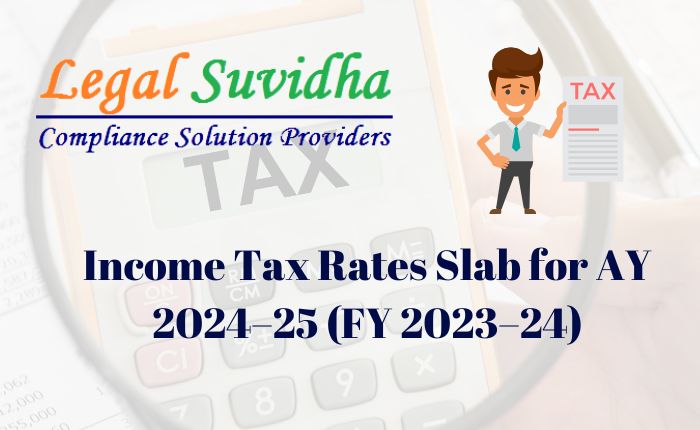The Indian taxation system follows a progressive approach where the tax payable increases as income rises, with Income Tax slabs introduced to facilitate this approach. The applicability of these slabs depends on factors like the taxpayer’s residential status, income level, category, and age. Income Tax Rates in India are reviewed annually after the budget announcement, and this year the Finance Ministry has introduced significant changes. This article can provide information on Income Tax slabs and rates applicable for FY 2023-24 or AY 2024-25, including details on the old and new tax regime.
Income Tax Slab Rates in India
The Indian Income Tax System follows a structured approach to levy taxes on the income of individuals and non-individuals through various Income Tax Slabs. These slabs are categorized based on the income level and are subject to different tax rates.
The tax applies to the range of income, which varies based on the applicable slab rate that keeps on changing every year. The slab rates of Income Tax are announced in the Union Budget every year by the Finance Minister.
The Income Tax Slab Rate bifurcation is based on several factors such as gender, age, and type of entity. The rates vary as follows:
- By Gender: The tax rates for male and female taxpayers are the same.
- By Age: The rates differ for resident and non-resident individuals in India.
- For Hindu Undivided Family (HUF)/ Association Of Person (AOP)/ Body Of Individual (BOI)/ Artificial Judicial Person (AJP): These non-individual entities are subject to different slab rates based on their income levels.
- On Non-individuals: The tax rates differ for partnership firms or LLPs, domestic companies, foreign companies, co-operative societies, and local authorities.
Here is a table detailing the Old Tax Regime for FY 2022-23 and FY 2023-24 Before Budget 2023 (until 31st March 2023) and the New Tax Regime After Budget 2023 (From 1st April 2023) in India:
| Income Range | Rate of Tax – Old Regime | Rate of Tax – New Regime (Without exemptions and deductions) | Rate of Tax – New Regime (With exemptions and deductions) |
|---|---|---|---|
| ₹0-₹2,50,000 | – | – | – |
| ₹2,50,000 – ₹3,00,000 | 5% | 5% | – |
| ₹3,00,000 – ₹5,00,000 | 5% | 5% | 5% |
| ₹5,00,000 – ₹6,00,000 | 20% | 10% | 5% |
| ₹6,00,000 – ₹7,50,000 | 20% | 10% | 10% |
| ₹7,50,000 – ₹9,00,000 | 20% | 15% | 10% |
| ₹9,00,000 – ₹10,00,000 | 20% | 15% | 15% |
| ₹10,00,000 – ₹12,00,000 | 30% | 20% | 15% |
| ₹12,00,000 – ₹12,50,000 | 30% | 20% | 20% |
| ₹12,50,000 – ₹15,00,000 | 30% | 25% | 20% |
| Above ₹15,00,000 | 30% | 30% | 30% |
It is important to note that the New Tax Regime rates are without exemptions and deductions. Taxpayers have the option to choose between the Old Tax Regime and the New Tax Regime every year.
Key Points:
- The tax rates are uniform for all types of individuals under the New tax regime.
- Senior and super senior citizens won’t receive an increased basic exemption limit benefit in the New Tax regime.
- Taxpayers with a net taxable income of up to Rs 5 lakh will qualify for a tax rebate under section 87A in both the New and old/existing tax regimes.
- The basic exemption limit for Non-Resident Indians (NRIs) is Rs 2.5 Lakh, regardless of age.
- A 4% Health and Education cess will be applied to the income tax liability in all cases.
- Surcharge is applicable as per the tax rates listed below for all categories mentioned above:
- 10% of Income tax if total income > Rs.50 lakh
- 15% of Income tax if total income > Rs.1 crore
- 25% of Income tax if total income > Rs.2 crore
- 37% of Income tax if total income > Rs.5 crore
- The highest surcharge rate of 37% has been reduced to 25% in the Budget 2023, effective from 1st April 2023.
If You have any query then connect with us at [email protected] or you can contact us & stay updated with our latest blogs & articles.




















